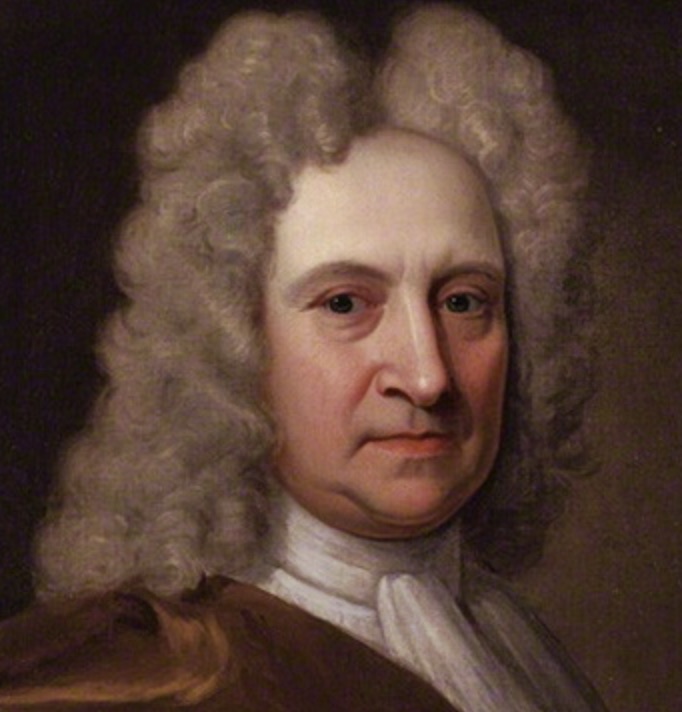
Edmond Halley was born on November, 8 1656, in London to a wealthy family. He attended St. Paul’s School where he demonstrated a keen interest in astronomy and mathematics. In July, 1673, he enrolled at Queen’s College, Oxford, bringing with him a 24-foot long telescope that his father had purchased to support Edmond’s intense interest in astronomy. In March 1675, Edmond wrote to John Flamsteed, England’s first Astronomer Royal, explaining that the positions of Jupiter and Saturn recorded in the published tables, as well as some of Tycho Brahe’s co-ordinates of the stars were incorrect. The following year, Halley made a historic journey to the southern hemisphere to observe and catalog the stars in the southern sky. During his travels, he made detailed observations of a comet that appeared in 1682, but it would be another two decades before he would formalize his observations into a theory.
Then, In 1684, Halley made a historic trip that would change forever the nature of science, from a descriptive to a predictive discipline. He visited Cambridge to ask Newton whether it was possible to derive Kepler’s laws from some basic principles. Newton recalled that he had already solved that problem, but had not published the solution. At Halley’s request, Newton sketched his derivation of Kepler’s laws in a paper titled On the Motion of Bodies in an Orbit. Recognizing the importance of this discovery, Halley hounded and cajoled Newton to publish all his discoveries about planetary motion in a comprehensive work that Halley would fund. Finally, in 1687 Newton published these observations and derivations in a treatise titled, Philosophiæ Naturalis Principia Mathematica, known today as Principia. This treatise came to be regarded by scientists in the centuries that followed as perhaps, the greatest publication in the history of science.
In November 1703, Halley was appointed Savilian Professor of Geometry at the University of Oxford, and two years later published his famous paper, Astronomiae cometicae synopsis asserting that the comet sightings of 1456, 1531, 1607, and 1682 were of the same comet, and that it would return in 1758. He asserted, “In the year 1456 … a Comet was seen passing Retrograde between the Earth and the sun… Hence I dare venture to foretell, that it will return again in the year 1758.” Halley became a fellow of the Royal Society and was appointed as its secretary. He published many papers in the society’s journal, “Philosophical Transactions.”
In 1720, Edmond Halley and William Stukeley attempted to date the building of Stonehenge by assuming that the structure had been built using a magnetic compass. Based on this assumption and the known periodicity of the variations in the earth’s magnetic field they estimated the date of its construction at 460 B.C. Although current estimates date Stonehedge construction about 2000 years earlier, their estimate was remarkable in light of their limited technology.
In that same year, Halley was appointed as the second Astronomer Royal of England, succeeding John Flamsteed. In that role he established and maintained the Greenwich Observatory, as the key institution for advancing observational astronomy and navigation. In addition to his research on Earth’s magnetic field, Halley made important contributions to early meteorology, including studies of trade winds and the effects of atmospheric pressure on weather patterns.
On January 14, 1742, at 85 years of age, Edmond Halley passed away in Greenwich, London, England. In 1758, sixteen years after his death, the comet that he predicted would appear in that year, arrived on schedule, validating his conjecture that the previous sightings of comets were sightings of that same comet in a highly eccentric orbit. Thereafter, it was named “Halley’s Comet,” and remains as one of his most enduring legacies.
Edmond Halley’s contributions to science and his pioneering efforts in predicting cometary orbits and advancing observational astronomy continue to be celebrated and remembered today through the periodic appearance of Halley’s Comet, which is visible from Earth approximately every 76 years.
